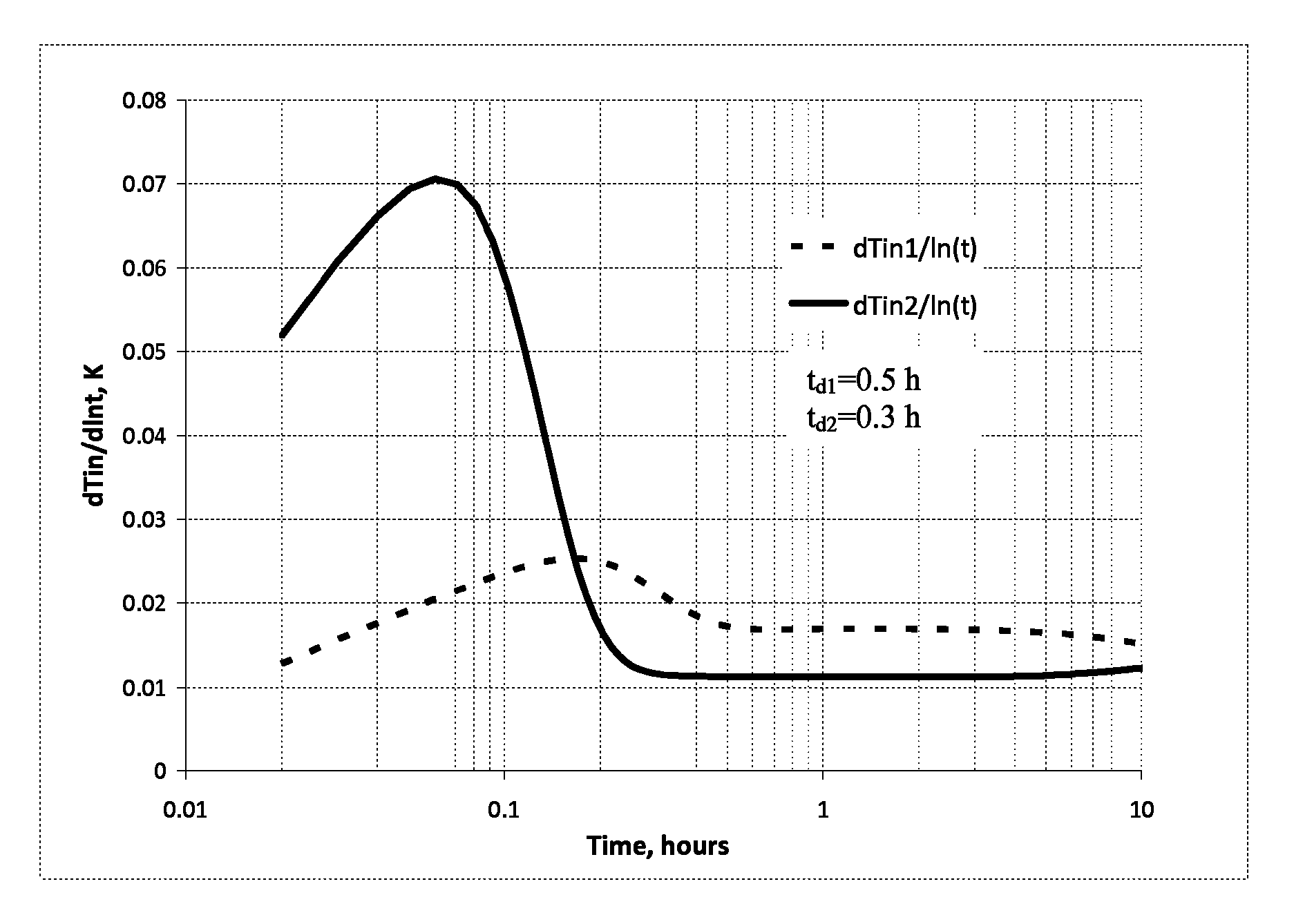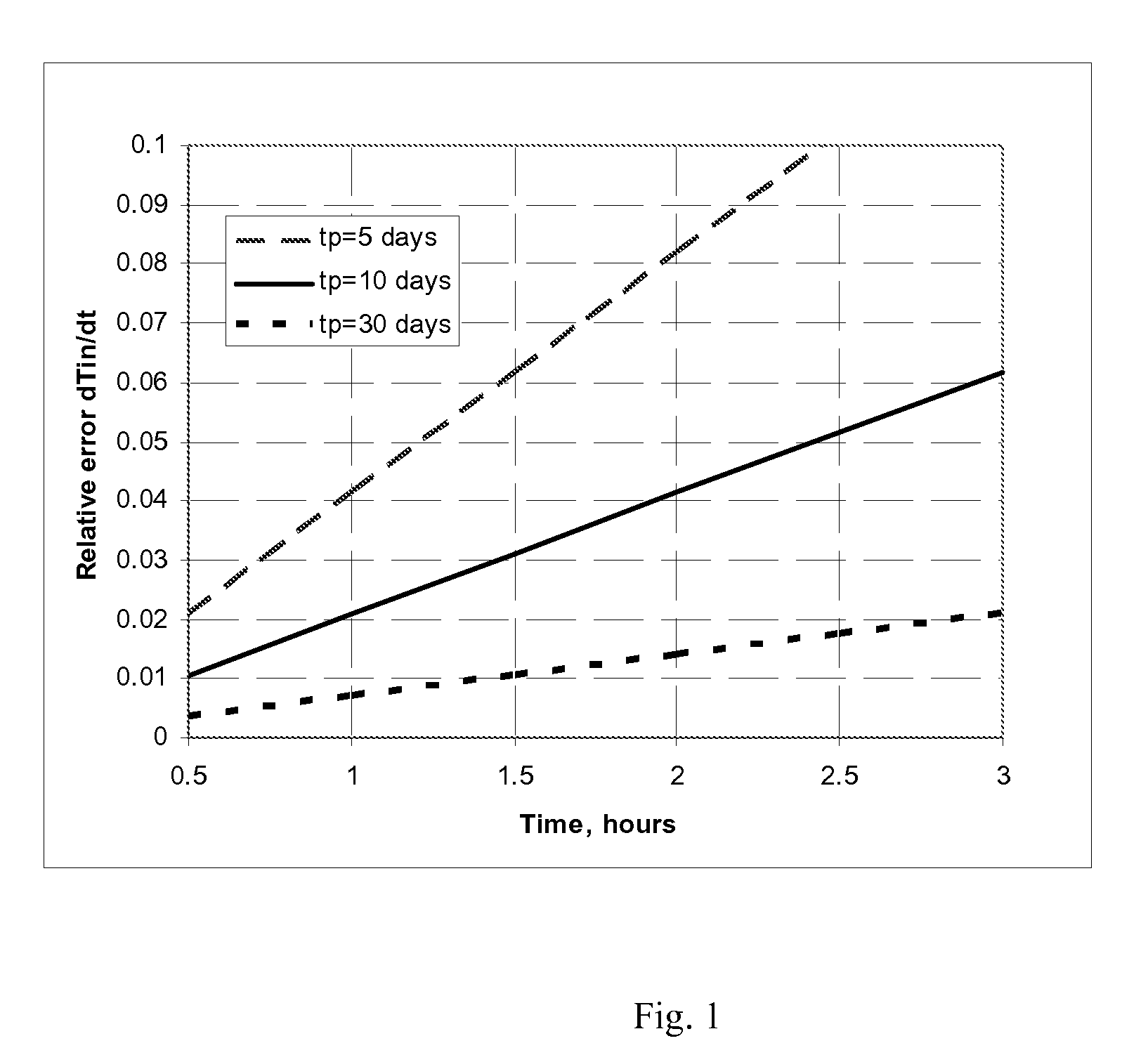Method of determination of fluid influx profile and near-wellbore space parameters
a fluid influx and space parameter technology, applied in the field of geophysical studies of oil and gas wells, can solve the problem of low accuracy in determining the relative flow rate of layers, and achieve the effect of increasing the accuracy of determining
- Summary
- Abstract
- Description
- Claims
- Application Information
AI Technical Summary
Benefits of technology
Problems solved by technology
Method used
Image
Examples
Embodiment Construction
[0010]The method presented herein is based on a simplified model of heat- and mass-transfer processes in a productive layer and a wellbore. Let us consider the results of applying a model that processes the measurement results of the temperature Tin(i)(t) of fluids flowing into a wellbore from two productive layers.
[0011]Pressure profiles in the productive layers are characterized by fast stabilization. After the production rate has been changed, rate of change in the temperature of the fluid flowing into the wellbore is described by the equation:
[0012]ⅆTinⅆt=ɛ02·(s+θ)·[Pe-P1f(t,td1)·1(δ12·tp+t2+t)+P1-P2f(t,td)·1(t2+t)],(1)
[0013]where ε0 is a Joule-Thomson coefficient, Pe is a layer pressure, P1 and P2 are a first bottomhole pressure measured before and a second bottomhole pressure measured after the production rate has been changed, s is a skin factor of a productive layer, θ=ln(re / rw), re is a drain radius, rw is a wellbore radius, t is the time passed from the moment when the...
PUM
 Login to View More
Login to View More Abstract
Description
Claims
Application Information
 Login to View More
Login to View More - R&D
- Intellectual Property
- Life Sciences
- Materials
- Tech Scout
- Unparalleled Data Quality
- Higher Quality Content
- 60% Fewer Hallucinations
Browse by: Latest US Patents, China's latest patents, Technical Efficacy Thesaurus, Application Domain, Technology Topic, Popular Technical Reports.
© 2025 PatSnap. All rights reserved.Legal|Privacy policy|Modern Slavery Act Transparency Statement|Sitemap|About US| Contact US: help@patsnap.com



